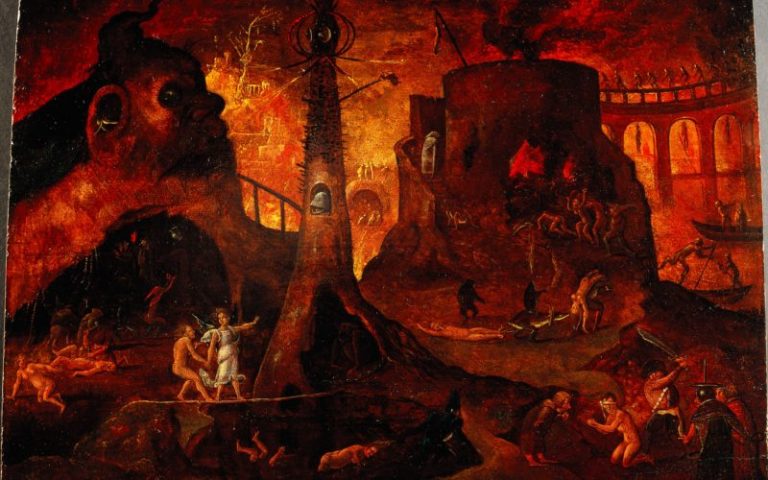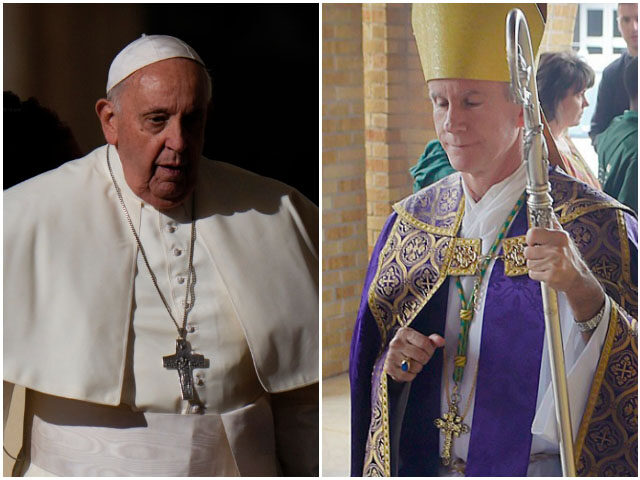For the record, I never believed the story put about in the Italian press that Pope Francis has dismissed the Christian belief in hell. It struck me as fake news and so it has proved. Nonetheless, when Cardinal Nichols was asked for his comment on the story on Radio 4, I rather wish he had not merely dismissed the imagery about hell as not being part of Catholic teaching, nor commented “There’s nowhere in Catholic teaching that says any one person is in Hell.”
That may be true, but whenever Catholics comment thus, I sense that they themselves don’t believe anyone is ever damned. Hell isn’t real to them. They don’t want to seem judgemental and they fear being hauled over the coals – a useful metaphor in this context – by a relentlessly sceptical media.
We cannot judge the state of a soul at death; only God can. Yet the evidence of the Gospels and the testimony of the saints tell us that some people, nameless obviously, would rather choose the barren solace of prideful isolation than join the glad company of heaven. This woeful choice is described by fine psychological acuity by CS Lewis in his book, The Great Divorce.
An excellent book I have blogged about in early February also puts it well. In Conversion by Fr Donald Haggerty (Ignatius Press) the author, reminding us of the demonic intelligence of Satan, writes, “Perhaps he saves his energy for a seductive attack at a late hour in life when a soul, after long years of respectable virtue and perhaps little love or concern for other souls, would find it insulting to acknowledge any personal contribution to Christ’s crucifixion.”
Fr Haggerty looks at the two men crucified on either side of Jesus, the Good Thief and the Bad Thief. We all recall the sublime exchange between Christ and the Good Thief but none of us care to contemplate what happened to the Bad Thief. The Gospel account does not seriously suggest that we are looking at two repentant men. Haggerty writes, “But what happened to the “other” man at the crucifixion? The Gospel is quiet and does not speak of any appeal to the mercy of God. We have to assume that this man remained full of venom and curses to the end”.
And what is the role of the Mother of Christ at the foot of the Cross? Haggerty writes that although Mary would have prayed for both thieves, “despite her prayer and her desperate desire for the conversion of this other criminal, she stood helpless before what was likely the death of a man who refused any last act of repentance.” The author reflects that “the terrible pain it caused [Mary] to see a child of God lose his eternal soul” is the reason “why she begs us in her apparitions for prayer and sacrifice for the conversion of sinners.”
Haggerty’s reflections make a great deal of sober sense. Optimistically hoping no-one is in hell doesn’t begin to cut it. Indeed, it suggests a shrinking from the reality of evil and a refusal to recognise the supreme struggle in which we are all engaged, most especially at the hour of our death. “Jesus, remember me when you come into your kingdom” was the poignant, life-changing plea of the Good Thief. What of the Bad Thief? In his weekly column for Easter Sunday, Fr George William Rutler reminds us that “indifference to the Resurrection is not an option. The future life of each one of us depends on a willingness to be saved from eternal death.”
http://www.catholicherald.co.uk/commentandblogs/2018/04/02/why-we-must-take-hell-seriously/







